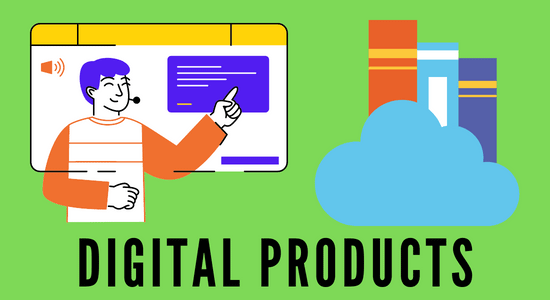Imagine your business is like a plant. Regular business strategies are like giving your plant sunlight and water - the basics it needs to grow. But what if you want it to grow faster and bigger than other plants around? That's where growth hacking comes in.
Growth hacking is like giving your plant a special kind of fertilizer that makes it shoot up quickly. It's about finding clever, sometimes unconventional, shortcuts to help your business flourish faster than usual. Instead of waiting around, you're trying fun, experimental ways to get ahead. It’s not just about improving, but about supercharging your growth using smart tricks. So, while regular business strategies and growth hacking both want the plant to grow, growth hacking is all about rapid, standout growth!

What is Growth Hacking?
Growth hacking is a marketing strategy that focuses on quickly finding the most effective methods to grow a business, especially in the startup world. The term "hacking" here implies unconventional and rapid experimentation, not anything illicit. Growth hackers blend marketing, product management, and engineering to achieve growth. They rely on metrics and analytical thinking, as well as creativity and intuition.
Here are the key concepts of growth hacking:
1. Objective Focused
Growth hackers have a singular focus – growth. Every strategy, tool, or technique they use is aimed at growing the user base or revenue of the business.
2. Data-Driven
Growth hacking relies heavily on metrics and data. Growth hackers continuously test, measure, and iterate their strategies based on the data they collect.
3. Experimentation
A big part of growth hacking is trying out various strategies and tactics to see what works. This often involves A/B testing, where two versions of a product or marketing strategy are tested against each other to determine which one is more effective.
4. Product as a Core
Growth hackers believe that the product itself is a major driver of growth. If the product is good and meets users' needs, it will help fuel its own growth. Hence, product enhancements and modifications can be core growth strategies.
5. Viral Loops
One popular growth hacking strategy is to create a viral loop where users naturally bring in other users. Think of how Dropbox gave extra storage space for referring friends or how certain mobile games give rewards for sharing the game with friends.
6. Cost-Efficiency
Startups usually operate on tight budgets. Growth hacking strategies often prioritize low-cost or no-cost methods over big-budget marketing campaigns.
7. Leveraging Existing Platforms
Growth hackers often find innovative ways to use existing platforms to drive growth. For instance, Airbnb leveraged Craigslist to grow its user base in its early days.
8. Iterative and Rapid
Unlike traditional marketing that might work on longer campaign cycles, growth hackers quickly iterate on their strategies, doubling down on what works and discarding what doesn't.
Did You Know?
- Companies Using Growth Hacking: Over 90% of startups now use some form of growth hacking techniques.
- Budget Allocation: Small businesses typically allocate between 20-30% of their budget to growth hacking strategies.
- Growth in Popularity: The term "growth hacking" has seen a 500% increase in Google searches over the past 5 years.
- Impact on Revenue: Businesses that implement growth hacking strategies often report a revenue increase of up to 30% within a year.
- Use in Social Media: Approximately 70% of growth hackers focus on social media platforms to boost brand awareness.
Does Growth Hacking Apply To You?
It better. Because growth hacking is more than just a strategy for tech companies. Its principles, when applied with creativity and an understanding of your specific business and market, can lead to impressive results. Whether you’re just starting out or looking to breathe new life into an established venture, considering growth hacking techniques might offer the spark you need.
Think of it as a mindset rather than a strict set of tactics. At its heart, it’s about being agile, data-driven, and willing to experiment with unconventional methods to boost growth. Whether you’re running an online store, a blog, or a local cafe, this mindset can help identify areas of potential rapid growth.

For example, if you own a local cafe, instead of just relying on traditional advertising or waiting for walk-ins, you might consider unique strategies to encourage customer referrals or use social media in fresh ways.
Maybe you offer a special discount to customers who post pictures of their favorite dish at your cafe. Or perhaps you collaborate with local influencers for limited-time menu items.
Online businesses have a treasure trove of tools available. Suppose you run an e-commerce site. Analyzing your website's data can provide insights about which products are most popular, where customers drop off, and which parts of the site generate the most engagement. Focus on these areas and continually test new strategies, then you can optimize for better sales and customer retention.
It's not just about marketing and sales, though. The product or service itself plays a central role in growth hacking. If customers love what you offer, they'll naturally want to share and recommend it.
Did You Know?
- Email Marketing Efficiency: Email marketing, a common growth hacking tool, has an ROI of $42 for every $1 spent.
- Startup Success Rates: Startups that employ growth hacking techniques have a 15% higher survival rate after 5 years compared to those that don’t.
- Content Marketing: About 60% of growth hackers use content marketing as their primary tool.
- A/B Testing: 75% of internet-based businesses use A/B testing as part of their growth hacking strategies.
- User Acquisition Cost: Growth hacking strategies can reduce the cost of customer acquisition by up to 50%.

So, pay attention to feedback, reviews, and comments. Making small tweaks based on feedback can make a significant difference in how your product or service is perceived and can lead to increased organic growth.
It's also essential to be adaptive. The digital landscape, consumer behaviors, and market dynamics are always changing. What’s been working well until recently might stop working tomorrow. Regularly revisiting your strategies, being open to change, and being willing to ditch old tactics for new, more effective ones are key to success in growth hacking.
Here's how you get started:
1. Have Clear Objectives
Before anything, you need a clear vision of what "growth" means for your venture. Is it acquiring new users for your app? Increasing sales of a particular product? Boosting foot traffic to your physical store? Once you’ve pinpointed your objective, quantify it. Instead of “I want more traffic”, aim for “I want 1,000 visitors every day by next April.”
What Do You Advocate?
2. Analyze Your Current Data
Before formulating new tactics, understand where you stand. Use tools like Google Analytics for websites, or equivalent analytics for your specific platform. Look for:
- Source of your traffic or customers
- Conversion rates (how many visitors take a desired action?)
- Behavior flow (for digital platforms, how do users navigate?)
- Points of drop-off or cart abandonment
3. Leverage Tools & Platforms
There are countless tools available designed for growth:
- For Digital Businesses: Use SEO tools like Moz or Ahrefs to improve your site’s visibility. Platforms like Mailchimp or SendGrid can optimize email campaigns.
- For Physical Businesses: Consider loyalty card systems or partnerships with local businesses to drive foot traffic.
4. Content Creation
Good content can drive organic growth. This doesn’t just mean blog articles, but videos, infographics, webinars, podcasts, or any medium that your target market engages with. Ensure it’s valuable, shareable, and relevant.
5. Optimize Conversion Rates
Split testing is a good way. You present two or more versions of a page (or any other content) to see which performs better in terms of conversion. Headline Analyzer plugin does a good job to see which headline draws most attentions.
Or maybe a green "buy now" button works better than a red one, or perhaps a different headline grabs more attention.
6. User Engagement & Retention
It's cheaper and more sustainable to retain an existing customer than acquire a new one. Engage them with:
- Regular updates or newsletters
- Special offers or loyalty rewards
- Feedback loops where they can voice opinions or concerns, making them feel valued
7. Social Media & Community Building
Choose platforms that align with your target demographic. Instagram might be great for a fashion brand but less so for a B2B software solution. Engage actively, run ads, create shareable posts, or even contests to encourage user participation.
8. Collaborate & Partner
Find non-competing businesses or figures in your industry and collaborate. Guest posts, joint webinars, or bundled promotions can tap into their audience and vice versa.
9. Adjust and Repeat
Once strategies are in motion, constantly monitor their efficacy. If a campaign or tactic isn’t yielding desired results after a reasonable time, don’t hesitate to pivot. Conversely, if something's working exceptionally well, consider amplifying it.
Did You Know?
- SEO Impact: Companies focusing on SEO as a growth hack see an average increase in traffic of about 30%.
- Social Media Engagement: Posts with images produce 650% higher engagement than text-only posts, a common growth hacking tactic.
- Mobile Optimization: Over 80% of growth hackers emphasize mobile optimization due to the increasing use of smartphones.
- Influencer Marketing: Influencer marketing, a growth hack strategy, yields an average of $6.50 for every dollar spent.
- Referral Programs: Dropbox, a notable example of growth hacking, saw a 3900% growth over 15 months largely due to its referral program.
Referral Systems As a Growth Hacking Technique

Referral systems are a powerful mechanism for promoting growth. Essentially, they're a structured method to tap into the existing networks of your current users or customers to gain new ones. The principle behind this is simple yet potent: people trust recommendations from those they know.
Key Elements of Referral Systems
#1. Incentivization
At the core of most referral systems is a reward structure. Both the referrer and the referred often receive some form of benefit. This can be in the form of discounts, credits, added features, or other perks. By offering tangible benefits, you encourage users to actively promote your product or service.
#2. Ease of Use
For a referral system to work efficiently, it has to be user-friendly. This means creating an easy way for users to share referral links, whether it's via email, social media, or direct messaging. The fewer the steps and the simpler the process, the more likely users are to participate.
#3. Clear Communication
It's essential to make the benefits of the referral system clear to all participants. This includes defining how rewards are earned, any terms and conditions, and how and when rewards will be delivered.
#4 Track and Optimize
An effective referral system should allow you to track key metrics like the number of referrals made, the conversion rate of referrals, and the overall impact on growth. Monitoring these metrics allows for continuous improvement of the system.
#5. Personalization
While ensuring you don't infringe on privacy, personalizing referral messages or offers can enhance their effectiveness. For instance, allowing users to send a personalized message along with the referral link can increase trust and conversion rates.
#6. Feedback Loop
Actively gather feedback about the referral process from your users. This can reveal areas for improvement and also help in addressing any challenges or reservations users might have about referring others.

Benefits of Referral Systems:
- Cost-Effective Growth: Acquiring new users or customers through referrals often has a lower cost compared to traditional advertising or marketing channels.
- Quality Leads: Referrals are typically high-quality leads. Since they come through a recommendation, they are more likely to be interested in your product or service and have a higher potential to convert.
- Building Trust: Recommendations from friends, family, or colleagues carry significant weight. A referral system leverages this inherent trust, allowing your product or service to be viewed more favorably.
- Enhanced Loyalty: By rewarding your loyal users for referring others, you not only appreciate their efforts but also deepen their connection to your brand.
Referral systems harness the power of personal recommendations, amplifying the growth potential of a product or service. By aligning incentives and ensuring a smooth user experience, businesses can effectively turn their current user base into a potent marketing force.
Did You Know?
- Landing Page Optimization: Optimized landing pages can increase conversion rates by over 50%.
- Video Marketing: Including video on landing pages can increase conversion rates by 80%.
- Growth Teams: Companies with dedicated growth teams saw a 30% higher effectiveness in their growth strategies.
- Customer Retention: Businesses using growth hacking report a 20% increase in customer retention rates.
- Data Analytics: 95% of growth hackers say that data analytics are critical to their marketing strategies.
Can An Affiliate Marketer Growth-Hack?

So companies and business owners use affiliate marketers to growth-hack, but how about affiliate marketers themselves? Can they growth hack their businesses?
The answer is of course, yes. As an affiliate marketer, you can definitely use growth hacking techniques to scale your efforts and increase your revenue. Here's how you can implement growth hacking principles in affiliate marketing:
1. Niche Selection and Product/Service Validation
- Deep Dive: Understand and select a niche where you can provide genuine value. Validate the products or services you're promoting. Ensure they solve real problems and have good demand.
- Rapid Experiments: Test different niches and offers rapidly to see which ones resonate most with your target market.
2. Quality Content Creation
- Engage: Create valuable content tailored to your niche. This can be blog posts, videos, webinars, infographics, or e-books. By offering value, you'll build trust and authority.
- Optimization: Use SEO best practices to ensure your content ranks well on search engines, driving organic traffic.
3. Optimize Conversion Rates
- A/B Testing: Test different calls to action, page designs, or even the positioning of affiliate links to see what converts best.
- User Experience: Ensure that the user journey on your platform (whether it's a blog, YouTube channel, or website) is intuitive and encourages them to take action.
4. Drive Traffic
- Paid Ads: While affiliate marketing often leans on organic traffic, don't shy away from using paid advertising, especially if you've found a profitable niche. This can scale up your results.
- Social Media: Engage with relevant communities on platforms like Reddit, Facebook, Twitter, and others to share your content and insights.
5. Email Marketing
- Lead Magnets: Offer something of value (e.g., a free e-book or a webinar) in exchange for visitors' email addresses.
- Nurture: Once you have a list, nurture these leads with regular, valuable content and subtly introduce them to affiliate offers that solve their problems.
6. Network and Collaborate
- Guest Posting: Write for other blogs or websites in your niche. This can expose you to a wider base of potential traffic.
- Webinars & Collaborative Content: Team up with influencers or experts in your niche to co-create content. This can help both parties tap into each other's audience.
7. Track, Analyze, and Iterate
- Data-Driven Decisions: Use tools like Google Analytics to understand where your traffic is coming from, what content they're engaging with, and where you're getting the most conversions.
- Pivot and Adapt: If certain strategies aren't working, be ready to change your approach. The digital landscape evolves rapidly.
8. Educate Yourself Continuously
- Stay Updated: The world of affiliate marketing, like all digital sectors, evolves rapidly. Regularly update your knowledge about new tools, platforms, and strategies.
- Feedback Loop: Seek feedback from your subscribers or users. This can provide invaluable insights into what they truly need or are interested in.
Affiliate marketing is a business model itself too. And like any business, growth hacking principles can be applied to find rapid and efficient means of growth. By combining traditional affiliate marketing strategies with innovative growth hacking techniques, you can significantly amplify your result.
